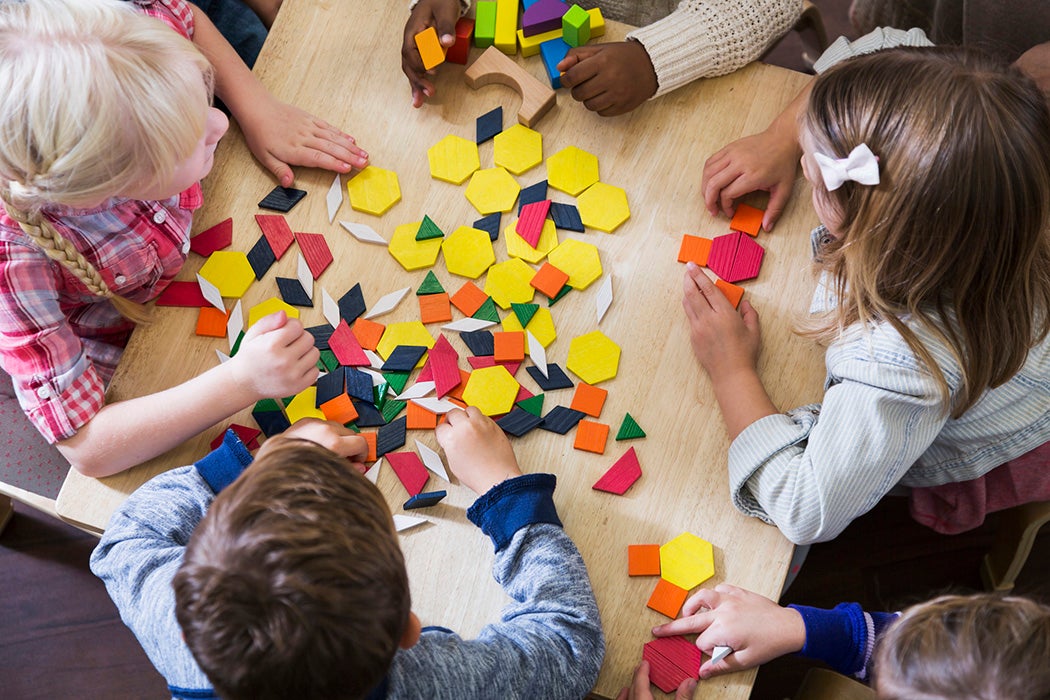Outright expressions of racism are rarer today than they were in the last century. But implicit or unconscious racial biases haven’t gone away, even as much of society, including parents and teachers, actively discourage the expression of such biases.
“Modern research in child development has shown that young children exhibit biases based on race, gender, language, and other attributes during preschool and elementary school years,” write Andrew N. Meltzoff and Walter S. Gilliam. Children acquire, they continue, “racial biases before they enter the first grade.” How do they do so?
Meltzoff, a psychologist, and Gilliam, an expert on early childhood education, note that “children are not born harboring racial biases, but they are born learning.”
“Children learn more in the first five years of life than at any other equivalent period in development,” they write. “Adults are wiser than children, and adolescents more introspective about their place in the world, but infants and preschool children are more rapid learners across many domains.”
Language is only the most obvious of things children learn. Humans are born capable of learning any language, and they “quickly become specialized in the language spoken by their cultural group.” But they learn much more than language, Meltzoff and Gilliam explain, even before they learn language. Children are also astonishingly effective “social pattern detectors” who learn from the mere observation of “other people’s social interactions and non-verbal behaviors.” These other people include anyone they may observe: their peers, their parents, their parents’ cohorts, their teachers, even complete strangers in brief encounters.
“Although all animals learn,” Meltzoff and Gilliam write,
human children are unique in the animal kingdom in their tendency to learn mannerisms, skills, social practices, and values simply by observing nonverbal behavior patterns of other people. Social learning and imitation have evolutionary value because they allow human children to learn by ‘proxy,’ by watching what others do and reenacting what they see.
Meltzoff and Gilliam write that parents and teachers are often surprised at how quickly infants can watch a novel action/activity before replicating it at later times and places. In one study, a complete stranger performing a novel action for twenty seconds was enough for twelve-month-old babies to begin using, and remembering, the action, incorporating it as their own. This study was about activities, but the authors also give numerous examples of other studies that show unconscious racial biases are imprinted.
Children, “acutely attentive to the direction of the adult gaze,” notice when teachers (white or Black) unconsciously look at Black boys in class “when they anticipate trouble.” Children notice when Black boys are suspended or expelled for actions that don’t elicit the same response when done by white boys (or white or Black girls). Children in preschools see (typically non-white) teaching assistants and aides doing scut work under the supervision of the lead teacher (often white), “communicating ideas about who has power and authority—and children watch this daily.”
“Young children are astute observers of adult behavior,” they write. This means that “even subtle displays of negative affect and attention by adults are noted by young children who then shape their own biases based on this observational social learning.”
Weekly Newsletter
Children are “finely attuned to cues about prestige, power, and social status,” they write. Children sop up racially defined social hierarchies without knowing it, even in the face of parents and teachers avowing “colorblindness” and inclusivity. “Sometimes the lessons that stick the most are the ones never intended to be taught.”
“What every parent, teacher, and societal leader should think about is that children watch and learn from our behavior before first grade,” Meltzoff and Gilliam suggest. “When we exhibit biases in front of young children, we are unwittingly instilling our biases in their minds—biases they then adopt, practice, and perpetuate.”
Implicit biases thus seem to perpetuate implicit biases, leading to the question: how is the chain broken?
Support JSTOR Daily! Join our membership program on Patreon today.







